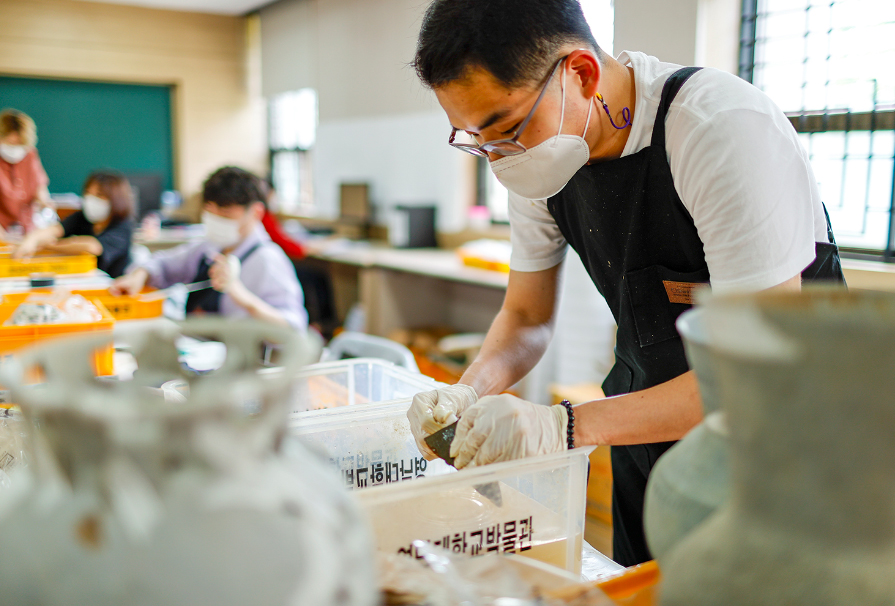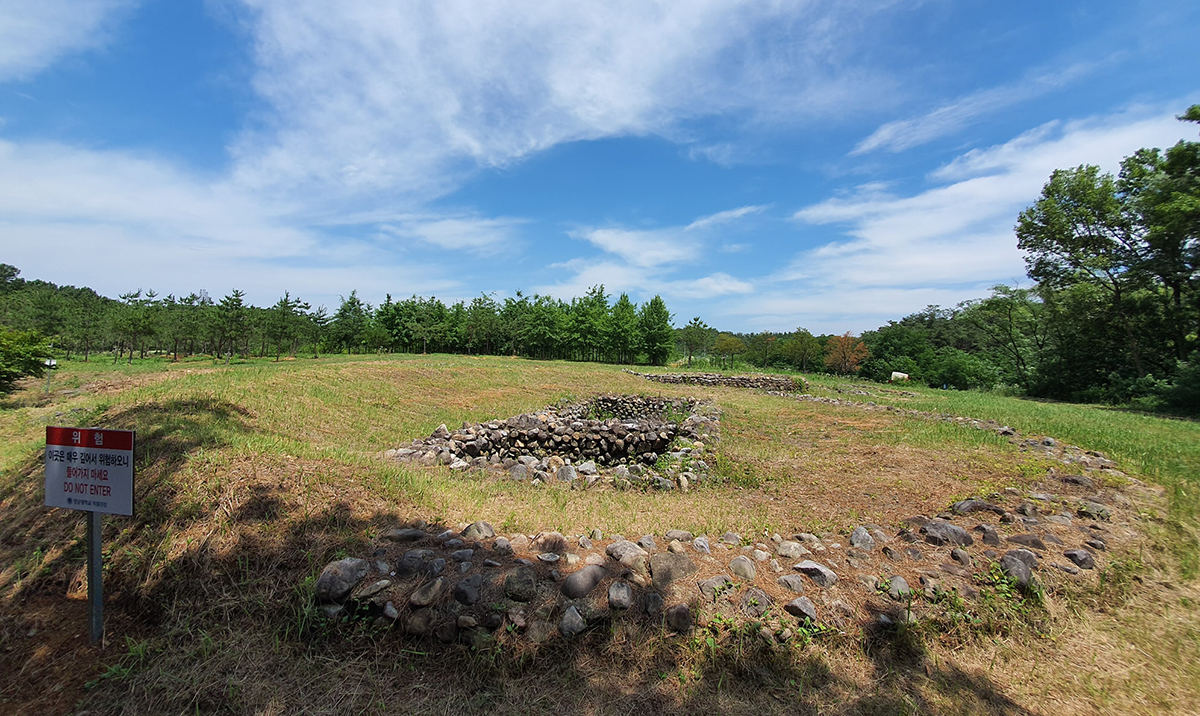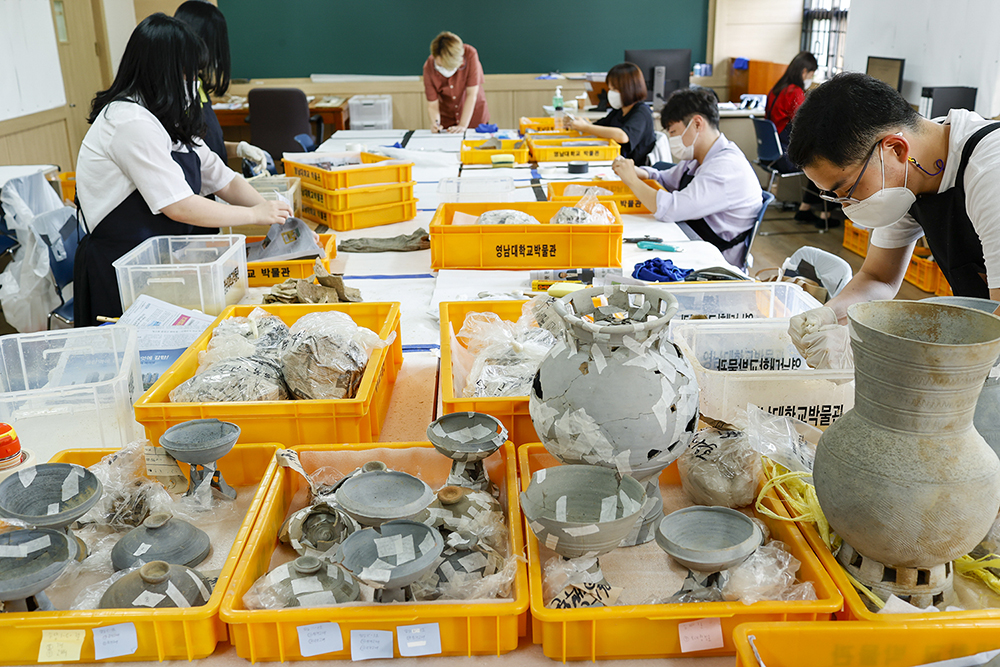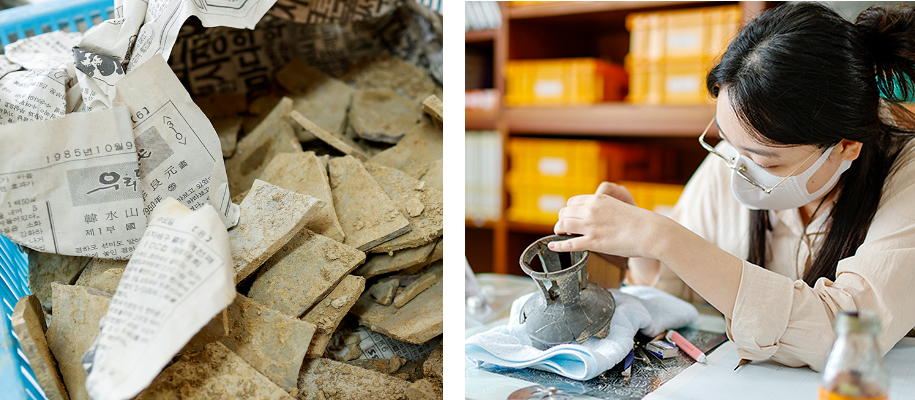YU steps up to organize Gyeongju tomb artifacts discovered in the 70s
University museums unite to submit proposal to the Cultural Heritage Administration... Government and the National Assembly provides exceptional budget support
Register and arrange unreported artifacts, publish reports, hold special exhibits, etc. until 2023
[September 10, 2020]
<YU Museum curators arrange artifact collection>
The Jeokseokmokgwakbun (stone tomb) that should be in Gyeongju is currently located at the YU campus in Gyeongsan, Gyeongbuk. The ‘Gyeongju Inwangdong Tombs’ discovered in 1977 were moved in its entirety and restored at the YU Folk Village. A total of 2,262 rare artifacts were found at this time and most of them are currently stored at the YU Museum. Valuable artifacts from the Silla Dynasty were asleep at the YU Museum for tens of years.
Why? There were few national institutes that could perform excavation studies in Korea since gaining its independence. At the time, YU Museum simply excavated numerous ancient tombs in Gyeongju and recorded its finds on behalf of the state. One was the ‘Gyeongju Inwangdong Tombs’ discovered in 1977.
<Gyeongju Inwangdong Tombs moved and restored at the YU Folk Village>
YU Museum also participated in the joint excavation of ‘Hwangnam-dong Tomb 110’ (excavated in 1973) and ‘Michuwangneung District Tombs’ (excavated in 1973-1974) in relation with the ‘Gyeongju General Development Plan Project’ of the government in the 1970s. About 2,000 important artifacts were found in this excavation as well. But this was a time when there was still no appropriate guideline on returning artifacts to the state or drafting reports. In result, the artifact excavation project ended with on-site excavations and submission of simple reports, thus being left behind as an incomplete project for 47 years.
It was YU Museum that awakened these artifacts that were asleep for a half-century. YU Museum has continuously been knocking on the doors of academia and the government to present solutions for ‘unreported discovered artifacts’ from 2017. At the Korean University Museum Association general assembly and academic conference held in August of 2018, YU Museum explained the need for the ‘buried cultural heritage unarranged artifact preservation and utilization project’, uniting the academic circles. Since then, YU and a few other university museums made proposals to the Cultural Heritage Administration, and the Administration requested a budget for this from the government, which catapulted the project.
The government and National Assembly finally stepped up. The National Assembly passed a budget of 4.2 billion KRW for the ‘Buried Cultural Heritage Unarranged Artifact Preservation and Utilization Project’ that has been sleeping in university museums around the nation. This was quite an unexpectedly high budget.
YU Museum plans to register the unreported artifacts, arrange them, issue general reports, etc. from this year until 2023. In addition to the Gyeongju ‘‘Hwangnam-dong Tomb 110’, ‘Michuwangneung District Tombs’, and ‘Inwangdong Tombs’ artifacts, artifacts from the Gyeongsan ‘Imdangdong Tombs’ (excavated in 1992) and ‘Joyeongdong Tombs’ (excavated in 1989 and 1990) were included in this project.
<Artifacts found in the 1980s (photo on left)>
YU Museum Director Jung In-seong said, “Through this project, we will be able to not only arrange the artifacts discovered after the 1970s, but also begin natural science restoration, preservation, artifact measurements and illustrations, photography, etc. We will finally be able to publish a general report,” and added, “We are also planning to hold special exhibits and seminars as follow-up projects. We will use the outcomes of this project for research and education, and share it with not only academia, but also with the community.”



